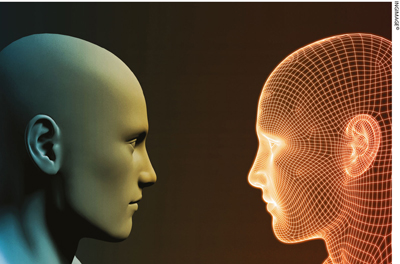AI UNPLUGGED
HAIL THE SERVICE AVATAR!
Nicola Walsh reports how AI and avatars are helping the services sector
The word ‘avatar’ is derived from Sanskrit and means ‘descent.’ In Hinduism, it translates into the descent of a deity to Earth in bodily or spiritual form. Avatar also means embodiment or personification in a principle, attitude or way of life.

Since the release of the epic science fiction film Avatar in 2009, which broke box office records on its first day, avatar has now a second and possibly more utilised definition in the English lexicon – an electronic image that enables and represents, in the form of one’s choice, interactions on online platforms.
Avatars are used extensively in online gaming and virtual worlds; they are the direct result of advances in AI.
Created by individual users to appear as an embodiment of their own choosing, avatars in a plethora of virtual worlds are unique in their abilities to engage and empower people. They enable individuals to act out roles in imaginary worlds, be free of the real world’s day-to-day responsibilities and interact across a global platform.
So it’s not surprising then that in these virtual realities, real world products have appeared. ‘Adverworlds,’ which are virtual worlds for marketing purposes, have helped global commercial brands like McDonald’s, Coca-Cola, Kellogg’s, Levi’s and Nike to tinker with the placement of their products in a variety of virtual worlds.
Coca-Cola was among the first consumer product sites to offer visitors an online virtual world experience by creating Coke Studios. Some eight million registered users operating as avatars named ‘v-egos’ (virtual egos) accumulated 10 points each when they drank a virtual Coke.
US banking corporation Wells Fargo created Stagecoach Island to teach teens basic financial skills. Fun was carefully balanced with education; players could lose their cool new virtual car because they hadn’t made their virtual payments! The US Army developed a virtual game to attract new recruits, which had more impact than all other forms of ads combined and cost only 0.25 percent of its advertising budget.
The adverworld is offering a new approach to promoting products in a highly sophisticated way to a target market.
You may have already interacted with a chatbot, which is a piece of automated messaging software that’s been around for a while to improve the customer experience.
Chatbots exist on websites, apps and social media, and are programmed to understand questions, provide answers and execute tasks by text. The hotel chain Marriott uses chatbots to enable guests to book their stay by entering dates and locations. The chatbot provides hotel suggestions, highlights relevant information and integrates useful local information.
However, with further advances in software programming, avatars are appearing as virtual assistants. They’re beginning to replace people in real world situations. In 2008, Alaska Airlines replaced live chat agents in its call centres with Jenn – a virtual assistant. In the space of a day, Jenn could deal with 7,000 questions, responding quicker than a human assistant and providing valuable customer insights to the company.
In a few hours, virtual agents can be created to meet target audience expectations and produce fluent human speech with an accent or preferred style, and they are rarely detected as virtual by the customers.
In comparison to the hours of training it takes for a voice actor to read in a particular style, virtual assistants can respond appropriately to enquiries and provide accurate information. They accumulate data, which is analysed to identify trends of enquiry and gaps in knowledge.
A virtual assistant operates 24/7 without restrictions related to terms and conditions or arriving at work in a bad mood. Overall, they can improve the online conversation, refer to a real person if required and create new revenue by reducing costs. The only downside is a caller having to repeat an enquiry if the call has to be referred to a real person.
Avatars as virtual assistants are with us. In 2016, Trefor Moss at the Wall Street Journal (WSJ) predicted the demise of the call centre worker due to a rise in the use of virtual assistants. He speculated about the impact that this would have on countries like the Philippines and India. In 2018, The Guardian in the UK reported: “The rise of robots threatens to terminate the UK call centre workforce.”
These avatars are changing the way we interact with one another. They’re stepping out of the confines of gaming and virtual reality, and entering our world. Most of us are still unaware of the different worlds in which we coexist.
Legend has it that when Alexander the Great learned that an infinite number of worlds had been identified, he wept: “There are so many worlds and I haven’t conquered even one.”




